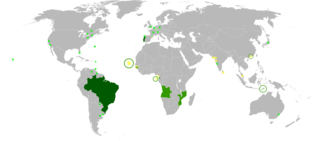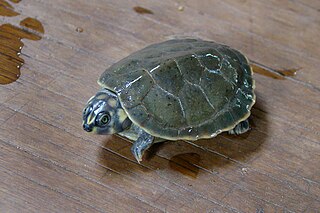| Abufari Biological Reserve | |
|---|---|
| Reserva Biológica do Abufari | |
IUCN category Ia (strict nature reserve) | |
| Location | Amazonas (Brazilian state) |
| Nearest city | Tapauá |
| Coordinates | 5°15′11″S63°04′16″W / 5.253°S 63.071°W Coordinates: 5°15′11″S63°04′16″W / 5.253°S 63.071°W |
| Area | 233,864.64 hectares (577,892.1 acres) |
| Designation | Biological reserve |
| Created | 20 September 1982 |
| Administrator | ICMBio |
Abufari Biological Reserve (Portuguese : Reserva Biológica do Abufari) is a biological reserve in the state of Amazonas, Brazil. [1] It is mostly lowland tropical rainforest, with very diverse flora and fauna.

Portuguese is a Western Romance language originating in the Iberian Peninsula. It is the sole official language of Portugal, Brazil, Cape Verde, Guinea-Bissau, Mozambique, Angola, and São Tomé and Príncipe. It also has co-official language status in East Timor, Equatorial Guinea and Macau in China. As the result of expansion during colonial times, a cultural presence of Portuguese and Portuguese creole speakers are also found in Goa, Daman and Diu in India; in Batticaloa on the east coast of Sri Lanka; in the Indonesian island of Flores; in the Malacca state of Malaysia; and the ABC islands in the Caribbean where Papiamento is spoken, while Cape Verdean Creole is the most widely spoken Portuguese-based Creole. A Portuguese-speaking person or nation may be referred to as "Lusophone" in both English and Portuguese.

A biological reserve in Brazil is a legally defined type of protected area of Brazil, a conservation unit that aims for full preservation of biota and other natural attributes without human interference. It may be visited only with prior approval of the responsible agency, and only for research or educational purposes.

Amazonas is a state of Brazil, located in the North Region in the northwestern corner of the country. It is the largest Brazilian state by area and the 9th largest country subdivision in the world, and is greater than the areas of Uruguay, Paraguay, and Chile combined. Mostly located in the Southern Hemisphere, it is the third largest country subdivision in the Southern Hemisphere after the Australian states of Western Australia and Queensland. It would be the sixteenth largest country in land area, slightly larger than Mongolia. It is larger than the whole of the Northeast Region of Brazil with its nine states. Amazonas is roughly 90% the size of the U.S. state of Alaska and is equivalent to 2.25 times the area of Texas.



















